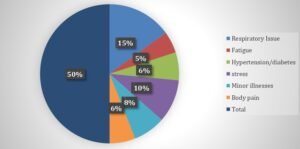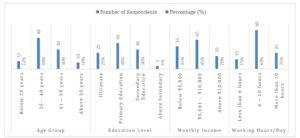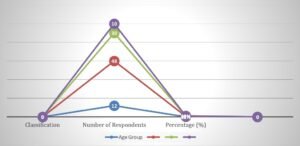UNDERSTANDING INDO-CHINA TRADE: TRENDS, PATTERNS, CHALLENGES AND FUTURE DIRECTIONS
September 30, 2025UNDERSTANDING INDO-CHINA TRADE: TRENDS, PATTERNS, CHALLENGES AND FUTURE DIRECTIONS
September 30, 2025Sparkling International Journal of Multidisciplinary Research Studies
URBAN STRUGGLES: LIVELIHOOD AND HEALTH ISSUES OF WOMEN STREET VENDORS IN TRIVANDRUM
*Nizia Ameer, & **Aparna, P.
*Assistant Professor and Research Scholar, MSM College, Kayamkulam, Alappuzha, Kerala, India.
**Associate Professor and Research Guide, Department of Economics, Sree Narayana College for Women, Kollam, Kerala, India.
Abstract
A street vendor is a person who sells goods or services to the general public from a temporary static structure or movable stall rather than a permanent built-up building. Due to its low skill requirements and cheap financial investment requirements, vending has become a significant source of employment for many urban poor people. In India, street selling is an integral part of the country’s cuisine and culture. Among the lively booths, women vendors are crucial because they not only boost the business but also defy social expectations in a field that is dominated by males. According to an analysis of the overall number of female street vendors in Kerala, they make a substantial contribution to the industry by offering millions of people easily accessible and reasonably priced goods every day. In spite of their influence, these women encounter many obstacles. Due to societal preconceptions, gender discrimination makes it difficult for women to get desirable positions. Furthermore, there are several health and safety issues because of the dangers posed by contaminated surroundings, lengthy workdays, and dependency on biomass burners. The study points out that it requires inclusive policy interventions and gender-sensitive frameworks to improve the working conditions and socio-economic security of women street vendors in Kerala.
Keywords: urban, vendors, health, women, and livelihood.
Introduction
In every economy, street selling is one of the most common informal sector jobs, and in recent years, the number of vendors in Indian cities has grown significantly. Kerala is known as “God’s own country” because of its immaculate beaches, majestic mountains, verdant surroundings, and peaceful atmosphere. Our society benefits greatly from the contributions made by female street vendors. Women have chosen to work as street vendors to support their families. In addition, there are extremely few barriers to admission and departure in this trade, and very little cash and expertise are needed. These ladies put forth a lot of effort to support themselves. However, in order to survive in this profession, they must overcome a number of obstacles every day. Due to their working conditions on the streets and lack of social protection, these women are vulnerable to a number of health and safety risks.
Statement of the Problem
Women street vendors make a substantial contribution to the urban economy by guaranteeing that reasonably priced goods and services are available. Notwithstanding their contributions, they nonetheless confront a number of difficulties, chief among them being a variety of medical conditions and occupational illnesses. These issues are frequently made worse by lengthy workdays, limited access to healthcare, and exposure to unsanitary surroundings. Their health issues are too frequently disregarded by both their own families and legislators.
Their general well-being, productivity, and quality of life are all impacted by this neglect, which starts a vicious cycle of susceptibility.
Significance of the Study
This study emphasises how important female street vendors are to maintaining local economies and urban lifestyles. It draws attention to the illnesses and health issues they deal with as a result of subpar working circumstances. Through an analysis of their ignored health issues, the study emphasises the need for community and family assistance. It gives legislators information they may use to create welfare and health programs specifically for female vendors. In the end, the study helps to ensure inclusive urban development and enhance their quality of life.
Objectives of the Study
- To determine the prevalent illnesses and health issues that women street vendors in the Trivandrum district deal with.
- To examine the occupational and socioeconomic elements influencing their health problems
- To assess the level of community and family assistance that women street vendors have access to for their medical needs.
Methodology of the Study
The present study is based on both primary and secondary data. Direct primary data collection was done from female street vendors in the Trivandrum district’s metropolitan regions. To learn more about their family support, health concerns, and socioeconomic background, a standardised questionnaire was created. Direct interviews were also done to get more thorough answers and dispel any questions. For this study, a sample of one hundred female street vendors was chosen. Simple random sampling was used as the sampling technique to guarantee equitable representation. To capture both qualitative and quantitative features, the questionnaire had both closed-ended and open-ended items. Age, income, working hours, type of employment, health issues, and access to healthcare were among the topics covered in the questions.
To foster trust and promote candid answers, the researcher personally conducted the interviews. Additionally, secondary data was gathered from official websites, government publications, books, and research journals. These resources included background data on urban informal work, women’s health concerns, and street hawking. The findings were enhanced and cross-checked with the use of primary and secondary data. For analysis, the gathered data were methodically categorised and tallied. The data was interpreted using basic statistical methods like averages and percentages. This approach guaranteed dependability and offered a thorough comprehension of the health issues facing Trivandrum’s female street vendors.
Review of Literature
Francie Lund (1998)4 based her study “Women Street Vendors in Urban South Africa: A Synthesis of Selected Research Findings” on the women street vendors in the central business districts of Johannesburg and Durban. The study found that street vendors’ educational attainment was incredibly low in both locations. The educational achievement of men and women differed. Compared to male street vendors, a greater percentage of female street vendors lacked any formal schooling. It was also demonstrated that migrant street vendors in Johannesburg had higher levels of schooling.
Several issues that street vendors face were investigated in the study “Problems of street vendors in Kollam district” by Kumar & Pillai (2017). Economic instability, social insecurity, weather fluctuations, barriers to credit facilities, health problems, discrimination, unstable employment, careful implementation of government policies and programs, ignorance of legal rights, etc., are the primary issues that street vendors face, according to their study.
Conceptual Framework
The conceptual framework of this study is based on the relationship among women street vendors’ livelihood, health, and family support in urban Trivandrum areas. Street selling is a substantial source of income and financial independence for women from marginalised groups. However, they are susceptible to a variety of health problems, such as respiratory disorders, body pains, stress, and diseases associated with their lifestyle, due to the long hours, dirty surroundings, and poor facilities of their profession.
The framework also takes into account the lack of proper institutional or social assistance, as well as the family’s disregard for their health issues. Their productivity and quality of life suffer as a result of this neglect, which also deteriorates their physical and mental health. The study, therefore, connects three primary dimensions:
Economic Contribution – women’s role in sustaining livelihoods through street vending.
Health Issues – occupational hazards and diseases arising from poor working conditions.
Social Support – the extent of family and community recognition and care for their health.
By examining these relationships, the conceptual framework seeks to demonstrate how economic survival frequently comes at the expense of health and welfare and why raising awareness and implementing legislative changes are essential to improving the lot of women street vendors
Data Analysis and Interpretations
Table 1. Distribution of Respondents by Major Health Problems
| Health Issue: Type | Number of Respondents | Percentage |
| Respiratory Issue | 30 | 30% |
| Fatigue | 10 | 10% |
| Hypertension/diabetes | 13 | 13% |
| Stress | 20 | 20% |
| Minor illnesses | 15 | 15% |
| Body pain | 12 | 12% |
| Total | 100 | 100 |
(Sample size: 100 women street vendors) Source: primary data

Fig.1 Distribution of Respondents by Major Health Problems
The table shows that Respiratory Issue (30%) is the most common health issue among women street vendors, followed by stress (20%) and minorillness (15%). Chronic illnesses such as hypertension and diabetes are also prevalent (13%), while headache and fatigue (10%), all these reflect the physical and psychological burden of their occupation.
Table 2. Socio-Economic Profile of Women Street Vendors
| Category | Classification | Number of Respondents | Percentage (%) |
| Age Group | Below 25 years | 12 | 12% |
| 25 – 40 years | 48 | 48% | |
| 41 – 55 years | 30 | 30% | |
| Above 55 years | 10 | 10% | |
| Education Level | Illiterate | 25 | 25% |
| Primary Education | 40 | 40% | |
| Secondary Education | 30 | 30% | |
| Above Secondary | 5 | 5% | |
| Monthly Income | Below 5,000 | 35 | 35% |
| 5,001 – 10,000 | 45 | 45% | |
| Above 10,000 | 20 | 20% | |
| Working Hours/Day | Less than 6 hours | 15 | 15% |
| 6 – 10 hours | 60 | 60% | |
| More than 10 hours | 25 | 25% |
(Sample size: 100 women street vendors) Source: Primary data

Fig. 2 Socio-Economic Profile of Women Street Vendors
According to the table, the most active vending age group is 25–40 years old, with 48% of respondents falling within this age range. Their employment options in the official sector are limited by their relatively low educational levels, with 65% having just completed basic school or none at all. Nearly 80% of them make less than ₹10,000 a month, which suggests that they are economically vulnerable. Sixty percent of women work six to ten hours a day, which puts them at risk for stress and health problems.
Table 3. Family and Social Support for Women Street Vendors
| Support Type | Yes (Received Support) | No (No Support) | Percentage Yes (%) | Percentage No (%) |
| Financial Support for Medical Needs | 20 | 80 | 20% | 80% |
| Emotional Support from Family | 25 | 75 | 25% | 75% |
| Assistance in Daily Work | 15 | 85 | 15% | 85% |
| Access to Community/Institutional Support | 10 | 90 | 10% | 90% |
(Sample size: 100 women street vendors) Source: primary data

Fig. 3 Family and Social Support for Women Street Vendors
According to the table, the majority of female street vendors receive little to no assistance from their families or communities when it comes to health and work-related issues. Just 20–25% of them get support from their relatives, either emotionally or financially. The low level of support (15%) for everyday tasks emphasises the absence of shared accountability for workload management. Assistance at the institutional or community level is essentially non-existent (10%), suggesting the need for awareness campaigns and legislative changes.
Findings
According to the study, women street vendors in metropolitan Trivandrum deal with a number of health issues as a result of their lengthy workdays, unsanitary surroundings, and poor working conditions. Body pain/backache (30%), respiratory troubles (20%), headaches/fatigue (15%), and chronic conditions including diabetes and hypertension (12%) are among the major health issues found. Economic vulnerability is shown by the fact that the majority of respondents are between the ages of 25 and 40, have low levels of education, and make less than ₹10,000 per month. Only 20–25% of people receive financial or emotional support from their families and communities, and institutional help is essentially non-existent. Together, these elements have an impact on their general productivity and well-being.
Suggestions
In order to inform women street vendors about occupational dangers and preventative care, implement health awareness programs tailored to their needs. In urban vending areas, offer reasonably priced healthcare facilities and routine medical examinations. Encourage social support and family engagement while highlighting the value of women’s health and income-generating. Create social programs and government policies aimed at women working in the unorganised sector to guarantee them financial stability, safety, and health insurance. Encourage hygienic facilities and ergonomic work practices at vending locations to lower health hazards and physical strain.
Conclusion
In the Trivandrum area, women street vendors are essential to maintaining the urban economy, yet their health and welfare are frequently disregarded. Long working hours, limited access to healthcare, unhygienic environments, and the frequency of occupational diseases and health-related problems underscore the urgent need for focused measures. Their susceptibility is greatly influenced by socioeconomic and vocational circumstances, and their difficulties are made worse by a lack of family and community support. In addition to protecting their health, addressing these issues is necessary to increase their productivity, provide social security, and acknowledge their vital role in the economy.
References
Chen, M. A. (2012). The Informal Economy: Definitions, Theories and Policies. WIEGO Working Paper No. 1. Cambridge, MA: WIEGO.
ILO. (2018). Women and Men in the Informal Economy: A Statistical Picture (Third Edition). Geneva: International Labour Office.
NCEUS. (2007). Report on Conditions of Work and Promotion of Livelihoods in the Unorganised Sector. New Delhi: Government of India.
Resmi, V. R., & Joseph, M. (2018). Health and Occupational Issues of Women Street Vendors: A Case Study from Kerala. Journal of Health and Development, 4(2), 45–53.
Shylaja, R. (2021). Socio-Economic Conditions of Women Street Vendors in Kerala. International Journal of Research and Analytical Reviews, 8(2), 98–104.
To cite this article
Nizia Ameer, & Aparna, P. (2025). Urban Struggles: Livelihood and Health Issues of Women Street Vendors in Trivandrum. Sparkling International Journal of Multidisciplinary Research Studies, 8(3), 1-8.
